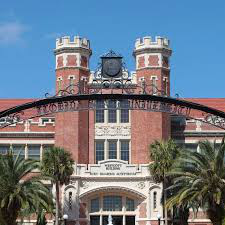Conveners
Facilities & Methods: Parallel 4
- Brian Page
Facilities & Methods: Parallel 4
- Brian Page
Jefferson Lab is considering extending the fruitful physics program carried out at 6GeV and 12 GeV electron beam with new infrastructure. A unique positron beam of high intensity and high polarization up to 12 GeV energy will open new opportunities in exclusive reaction channels (DVCS) and precision (two-photon exchange) and BSM physics (Dark Matter searches). Existing detectors upgrade to...
A beam of neutral kaons at the GlueX experiment will provide exciting physics opportunities for baryon and meson spectroscopy. With a flux exceeding previous experiments by up to three orders of magnitude, the approved K-Long facility at Jefferson Lab will allow us to substantially improve our knowledge of the properties of strangeness $S=-1$ hyperons by providing input for partial-wave...
sPHENIX is a new collider detector at the Relativistic Heavy Ion Collider, with a commissioning and first data-taking run taking place in Spring 2023. The experiment is purpose-built for state-of-the-art jet and heavy flavor probes of the Quark-Gluon Plasma, with qualitatively new capabilities not previously available at RHIC. This talk will give an overview of the sPHENIX physics program and...
The STAR Collaboration has successfully completed an upgrade consisting of forward detector systems located between 2.5 < η < 4.0. This upgrade comprises a Forward Calorimeter System, containing an Electromagnetic Calorimeter and a Hadronic Calorimeter, and a Forward Tracking System, consisting of a Forward Silicon Tracker and Forward small-strip Thin Gap Chambers. The forward detector upgrade...
SPD is an international experiment primarily focused on study of the
spin-dependent gluon structure of proton and deuteron in $pp$, $pd$, and $dd$
collisions. The experiment will operate on polarized beams of the NICA
facility at Joint Institute for Nuclear Research. The accelerator
complex can provide beams with the center-of-mass energy $\sqrt{s_{NN}}$
up to 27 GeV for $pp$ collisions,...
Understanding how nuclei behave at the extremes of neutron and proton number is critical to developing a predictive theory of nuclei and how they interact. This knowledge, in turn, allows us to elucidate the chemical history of the universe, use nuclei as laboratories to test fundamental symmetries, and develop tools and related technologies that can benefit society. The US Department of...
The future Electron-Ion Collider (EIC) in the US – with experimental operations starting in the early 2030s – is poised to be the machine in high-energy nuclear physics to answer longstanding question in hadronic physics. It will be capable of operating at luminosities up to $10^{34}$ cm$^{-2}$s$^{-1}$, and be the only machine able to collide polarized electron and polarized light / nuclear...
The Jefferson Lab Eta Factory (JEF) experiment is an upcoming experiment designed to run in Hall D at Jefferson Lab using an upgraded GlueX spectrometer to study various decays of the $\eta$ meson. The GlueX spectrometer consists of a $\sim$2 Tesla solenoid magnet housing a liquid hydrogen target and drift chambers used for tracking charged particles and an array of lead glass blocks (the...

